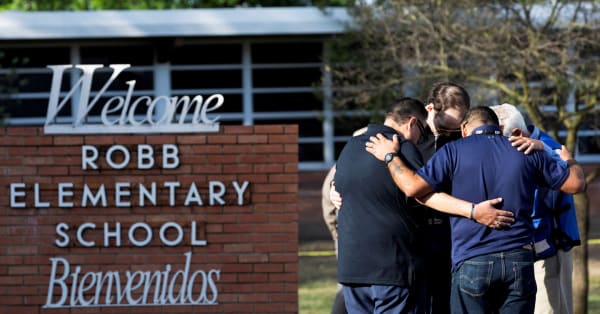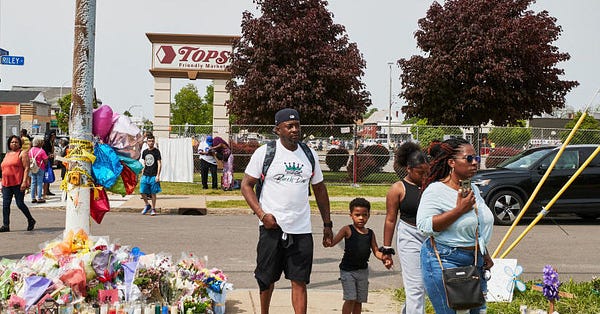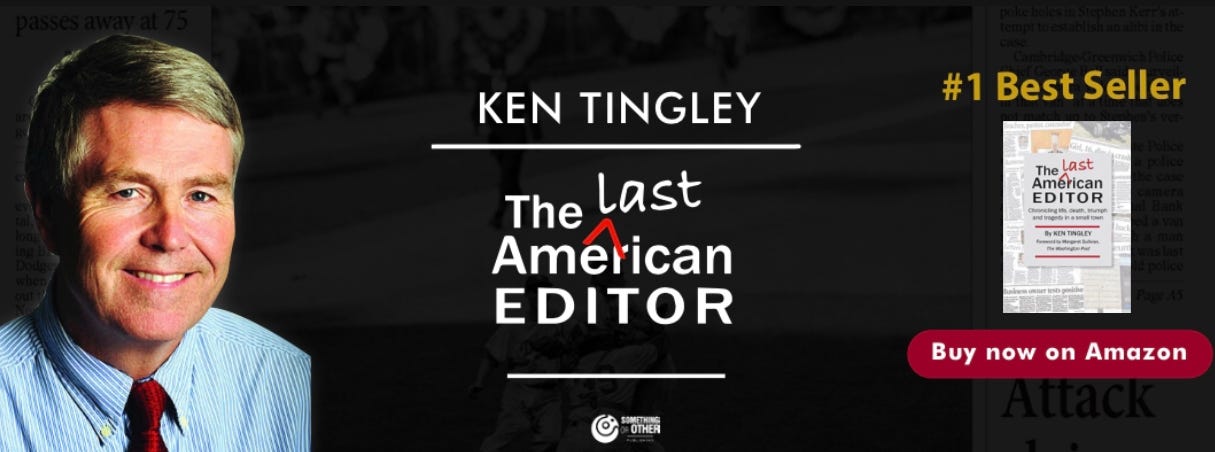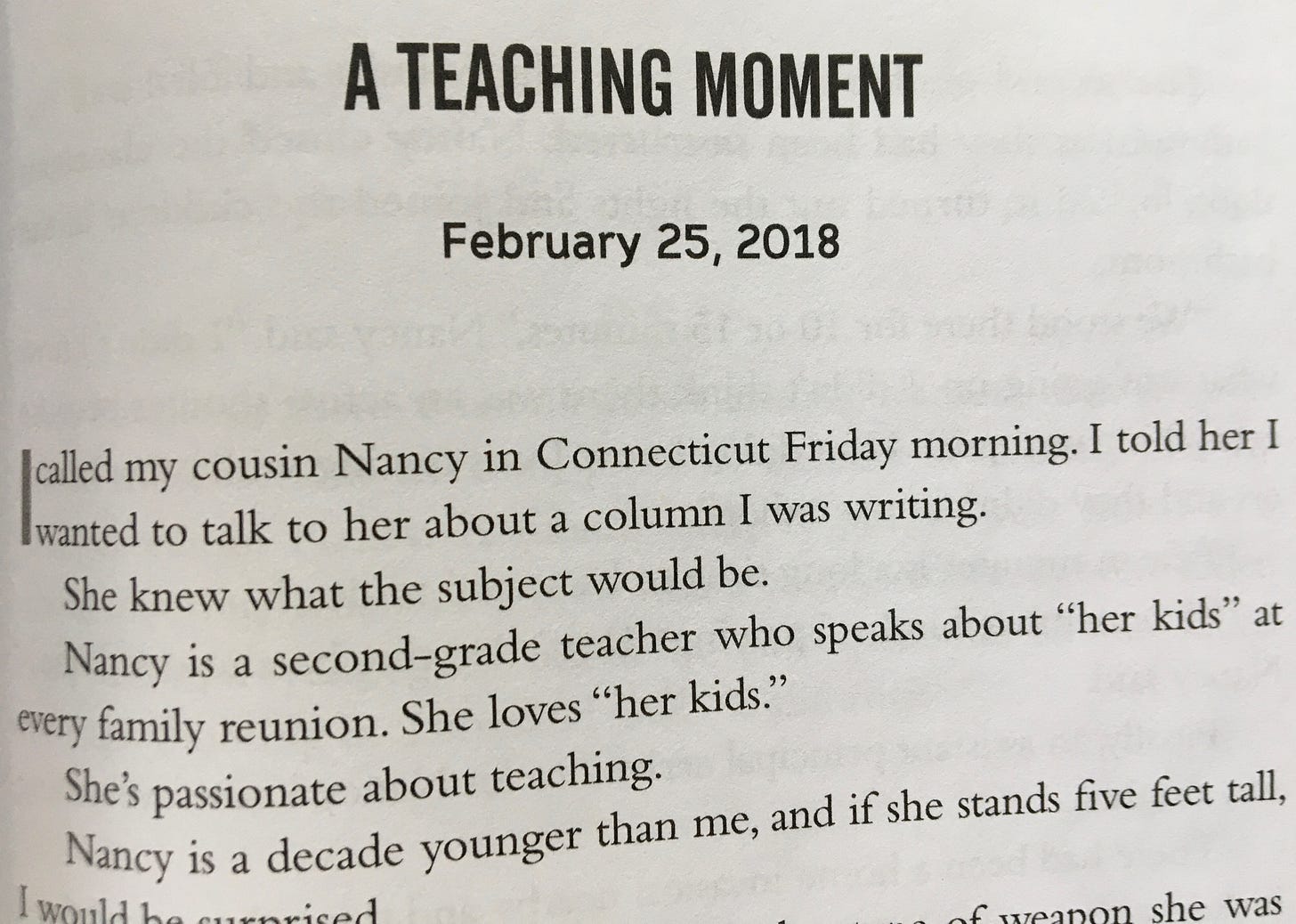The Front Page
Morning Update
Friday, May 27, 2022
By Ken Tingley
In April 1999, I had been editor of my newspaper for less than four months.
As we settled into our 4 p.m. page one news meeting on April 20, there was breaking news of a school shooting in Colorado.
Patrick Ridgell, one of our young sportswriters, walked into the meeting looking shaken. He spoke haltingly that his old high school was on television. Patrick was just 24 and had spent his sophomore year at Columbine High School.
This was the first school shooting.
Reporters and editors gathered around the newsroom TV and watched fleeing students wiggling out of school windows and armed police officers marching them away as if they’re were prisoners of war.
Twelve students were already dead, so was one teacher.
I asked Patrick to write a column to tell us about Columbine High School and the Littleton community.
“I sat down to write and I didn’t know what to put down on paper,” Ridgell wrote that day. “I didn’t know what I should say. Sportswriters can’t really know how to describe a situation of such weight. To give it some - any - perspective. I wonder who can?”
Those words hold as much weight today as they did 23 years ago, especially after Sandy Hook, Virginia Tech, Sutherland Springs, Parkland and just last week Buffalo.
“I heard the Jefferson County sheriff describe the school library as a gruesome sight,” Ridgell continued. Police found the bodies of 10 students there. It was also in that library that Patrick had mustered up the courage to ask a girl out on his first date.
But here is what else we found out that day.
We asked our education writer, Tucker Cordani, to get a reaction from school officials. But Cordani found something more insidious, the seeds of student behavior that in the hours after Columbine took on new meaning.
A week earlier a student from Fort Ann had been suspended after school officials learned he had brought a rifle to school on the school bus.
In Cambridge, a 12-year-old was facing Family Court charges for bringing a pellet gun to school.
And in Hudson Falls, 39 students were evacuated from a school bus after residents spotted what turn out to be an active pipe bomb on the lawn of a residence near the school.
That was nearly a quarter century ago.
We’ve had this problem for some time and we haven’t done much about it beyond locking school doors tighter.
In one of the chapters in my upcoming book “The Last American Newspaper,” I wrote, “I’d like to say Columbine was the impetus for a robust discussion about school security, gun control and identifying mental illness in our communities. I’d like to brag that this was our opportunity to call out long-held beliefs about Second Amendment rights and that we led a dramatic community debate. But we did not do that.”
It’s a reminder to you that journalists, editors and reporters don’t often come to their professions with preconceived notions about the world around them. They often evolve. That was certainly the case regarding the gun issue.
After Columbine, we were not ready to have that discussion. Honestly, we were afraid to have that discussion. In 1999, we had not written any editorials facing gun control and we would not after Columbine either. Yet, we were still sometimes referred to as “the liberal media.” We knew those types of stands would be trouble for us, maybe too much trouble.
Looking back, we were too slow to respond.
It would take multiple mass shootings to move the needle and ultimately the horrific shootings at Sandy Hook that pushed us to launch a team of reporters to look into the gun issue in our country.
That was 13 years after Columbine.
Now, nearly 10 years have passed since Sandy Hook and that reporting.
Guns are even easier to get than ever. And the recent pandemic has put the mental health of teens at even greater risk.
And our actions continue to be the least required to make us all feel better. I’m glad my son is no longer in school, but he does go to supermarkets, and movie theaters and an occasional concert. We are all at risk and we don’t care.
After Sandy Hook
Two of my columns on gun violence made it into my book “The Last American Editor.”Both are under the “Life & Death” section.
The first is on page 145 and titled, “You don’t want to read this.” It was published on the fifth anniversary of the Sandy Hook shooting in 2017 after I had stumbled onto the State Police report about what the officers who first responded found inside the school.
If I had my way, I probably would change the title now to: “You must read this.”
After Parkland
The second column is on page 149 and titled “A teaching moment.”
Not long after the Parkland high school shooting in Florida, there was a call to arm teachers in schools. I called up my younger cousin Nancy who is a long-time elementary school teacher in Connecticut, not far from Sandy Hook.
I asked her if she would arm herself.
“I don’t find it funny,” she said. “It actually infuriates me. That’s not my job. It’s not why I went to school. You know, I love my job, but the day I have to carry a gun is the day I will quit. I will stand in front of a bullet for your child, but I won’t shoot a gun.”
And as we know from so many of these school shootings, there have been teachers who have stepped in front of a bullet to save their kids.
After the shooting on Tuesday, she posted this on Facebook:
“Normally at this time, I would be sound asleep. Tonight, I just can’t. My heart is broken…again. I’m so mad that this keeps happening. The same people who are taking away women’s freedom over their own bodies are the ones that stand on their soapboxes yelling about their rights and freedom to own guns. I am disgusted. I am sad. And I am furious. I hope in November, people remember.”
AR-15 creator
Eugene Stoner is the creator of the AR-15 rifle. He died in 1997 before he had a chance to see what his creation had wrought on society.
Stoner designed the AR-15 in the late 1950s and it became popular among members of the military.
In a U.S. World and News Report article in 2016, Stoner’s family said he never intended the gun for civilian use and he never owned one himself.
The gun has been used in mass shootings in Newtown, the Orlando nightclub shooting, the Colorado theater shooting and others.
“After many conversations with him, we feel his intent was that he designed it as a military rifle,” Stoner’s family told NBC News at the time. “What has happened, good or bad, since his patents have expired is the result of our free market system. Currently, a more interesting question is: `Who is benefitting from the manufacturing and sales of AR-15s, and for what uses.’”
Search AR-15 sales online and you find sites such as guns.com selling AR-15 style rifles for $1,000 or less.
Gun sales
About 23 million guns were sold in the United States in 2020 which was a record.
According to Forbes magazine, there were nearly 400 million guns in the hands of Americans in 2018 or about 120 guns for every 100 people.
Tweet of the Day












I used to work with a man named Dan Roberts. The Post Star did a story about him, maybe 10 - 15 years ago. He served in Iraq and had PTSD from the war. When he came home, he got counseling which helped him tremendously and decided to go to college to become a counselor. We talked once about the mass shootings and how the killers were all using the AR-15 rifle. I'll never forget what he said to me. He said, "I don't care what anyone says, a gun that I used to kill people with has no business being on the streets in America"! I wholeheartedly agree!
I agree. Nobody in our country needs assault weapons. We should ban them. We should also have background checks. Gov. Abbott does a disservice to the mentally I’ll blaming this tragedy on mental health. Kudo to the Post Star for their article saying this.